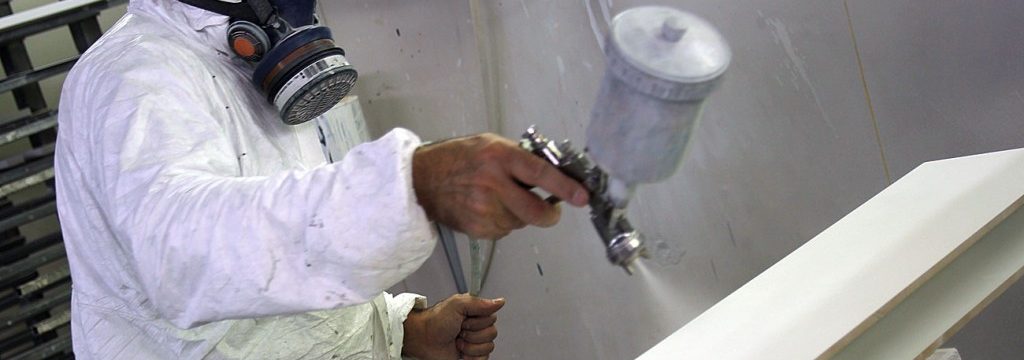Our most common pigmented finish (paint) is a satin acid catalysed 2 pack finish. Similar to the clear finish described above, it has a silky smooth finish, with soft luster, and will resist water, alcohol, moderate heat and solvents, as well as withstand moderate abrasion.
The usual way we paint panels is to paint over melamine board. We mask out the backs of doors, and only paint the face and edges, leaving the backs white. Painting directly on to melamine gives a good, hard, flat substrate to paint over.
Any edges or routered grooves that need undercoating are first checked to ensure that they are sanded flat and don’t have machine marks in them. After undercoating, all surfaces are sprayed with a guide coat, a light coat of thin black paint, before sanding. The guide coat is slowly sanded off, the highest points of the undercoat first, and gradually down until the surface is completely flat and all the guide coat has disappeared.
The panels are then blown off, and wiped down with a tack cloth before top coating. The operator wears a full body paper suit, including hood, to ensure no dust contaminates the job.
We have our own computerised tint system for pigmented finishes if we don’t already have the formula on file, so long as we have a colour chip we can match the colour.

